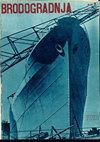RISK TRANSMISSION AND CONTROL OF PORT-HINTERLAND SERVICE NETWORK: FROM THE PERSPECTIVE OF PREVENTIVE INVESTMENT AND GOVERNMENT SUBSIDIES
IF 4.2
4区 工程技术
Q1 ENGINEERING, MARINE
引用次数: 4
Abstract
The increase in risk prevention investments in the port-hinterland service network (PHSN) effectively enhances the network’s ability to resist risks and improve the sustainability and stability of ocean transportation. Based on the construction of the PHSN risk prevention investment utility model, the equilibrium strategy, the related characteristics of each participant in the complementary networks and the complete network are analyzed. Similarly, the subsidy policy of the government under the utility maximization of the whole service network is studied. We further propose new types of subsidy strategies based on the key nodes and key groups given the resources available and the subsidy efficiency constraints imposed, while also validating the advantages of this method based on a case analysis. The results indicate that the (1) equilibrium risk prevention investment is closely related to the Katz-Bonacich centrality, network interaction intensity, cost of unit risk prevention investment and competition intensity; (2) an undifferentiated subsidy strategy cannot improve the risk prevention effectiveness of the whole network; (3) the subsidy strategy based on key nodes and key groups effectively improves the risk prevention efficiency; and (4) the subsidy strategy of key groups is superior to the subsidy strategy of key nodes. Accordingly, the results of this study provide a reference for participants and managers in the PHSN when making risk prevention investment decisions.港-腹地服务网络的风险传导与控制:基于预防性投资与政府补贴的视角
港口腹地服务网络(PHSN)风险防范投资的增加有效增强了网络抵御风险的能力,提高了海洋运输的可持续性和稳定性。在构建PHSN风险防范投资效用模型的基础上,分析了互补网络和完整网络中各参与者的均衡策略、相关特征。同样,研究了整个服务网络效用最大化条件下政府的补贴政策。在给定可用资源和补贴效率约束的情况下,我们进一步提出了基于关键节点和关键组的新型补贴策略,同时通过案例分析验证了该方法的优势。结果表明:(1)均衡风险防范投资与Katz-Bonacich中心性、网络互动强度、单位风险防范投资成本和竞争强度密切相关;(2) 无差别的补贴策略不能提高整个网络的风险防范效果;(3) 基于关键节点和关键群体的补贴策略有效提高了风险防范效率;(4)关键组的补贴策略优于关键节点的补贴策略。因此,本研究的结果为PHSN的参与者和管理者做出风险防范投资决策提供了参考。
本文章由计算机程序翻译,如有差异,请以英文原文为准。
求助全文
约1分钟内获得全文
求助全文
来源期刊

Brodogradnja
ENGINEERING, MARINE-
CiteScore
4.30
自引率
38.90%
发文量
33
审稿时长
>12 weeks
期刊介绍:
The journal is devoted to multidisciplinary researches in the fields of theoretical and experimental naval architecture and oceanology as well as to challenging problems in shipbuilding as well shipping, offshore and related shipbuilding industries worldwide. The aim of the journal is to integrate technical interests in shipbuilding, ocean engineering, sea and ocean shipping, inland navigation and intermodal transportation as well as environmental issues, overall safety, objects for wind, marine and hydrokinetic renewable energy production and sustainable transportation development at seas, oceans and inland waterways in relations to shipbuilding and naval architecture. The journal focuses on hydrodynamics, structures, reliability, materials, construction, design, optimization, production engineering, building and organization of building, project management, repair and maintenance planning, information systems in shipyards, quality assurance as well as outfitting, powering, autonomous marine vehicles, power plants and equipment onboard. Brodogradnja publishes original scientific papers, review papers, preliminary communications and important professional papers relevant in engineering and technology.
 求助内容:
求助内容: 应助结果提醒方式:
应助结果提醒方式:


